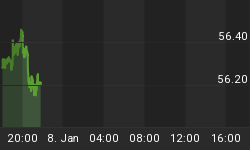It goes without question, among economists of the central planning mindset, that if a central bank can just set the right quantity of dollars[1], then the price level, GDP, unemployment, and everything else will be right at the Goldilocks Optimum. One such approach that has become popular in recent years is nominal GDP targeting.
How does a central bank affect the quantity of dollars? In discussing a nominal income targeting, Wikipedia gives the usual laundry list of how to do their magic: "...interest rate targeting or open market operations, unconventional tools such as quantitative easing or interest rates on excess reserves and expectations management..."
Other than expectations management -- which is just telling the market "blah blah blah" -- managing an income aggregate is about manipulating one interest rate or another.
In the real economy, people don't factor the quantity of dollars into their economic calculations. If you are in the grocery store to buy apples, you do not think about M0 money supply. Whether you are a farmer or miner, whether you operate a factory or trucking company, or even a bank or insurer, the money supply is irrelevant to you.
By contrast, the interest rate figures in every economic calculation in the economy. How much to borrow, how much to save, and how to assess the tradeoff between consumption and investment are all dependent on interest. The rate of interest is a factor in every price and the relationship between all prices in the economy.
For example, to grow apples you need land and you must plant trees. Then you have to wait for the trees to mature before they bear fruit. This requires an investment up front, in expectation of earning a return in the future. How high does this return need to be? It depends on the interest rate.
This decision, made by thousands of current and potential apple farmers, determines the price of apples in the grocery store. And this, in turn, determines the decisions of consumers to buy apples, to buy something else, or to do without fruit if they cannot afford it.
Whether the interest rate is manipulated upwards, whether it is forced downwards, or whether it is artificially locked in stasis, every price in the economy is affected and everyone's decisions are altered by the rate of interest. I have written a lot on the perverse incentives caused by interest rate manipulation, but today I want to focus on a different aspect of the problem.
So, let's perform a little thought experiment. Suppose a business must pay 20% interest on its capital. If it somehow manages to eke out a 21% rate of profit, it forks over 95 percent of what it earns to its lenders. If it can't earn at least 20 percent, then it ends up feeding its capital to its creditors.
Now consider a perverse world where enterprises can borrow at -5 percent. They literally repay investors less capital than they borrow. This case is the opposite of the one above; Lenders feed their capital to enterprises.
If interest is too high, the Fed is sacrificing entrepreneurs to investors. If interest is too low, then investors are sacrificed to entrepreneurs. Either way, our monetary planners pervert lending into a win-lose deal.
So what's the right rate of interest?
Only a market to determine that. Central planners have never gotten it right, are not right now, and will never get it right. They do, however, inflict collateral damage.
Market Monetarism -- the idea of central planning of credit based on a GDP target -- promises improved outcomes over what would happen in a free market. However, it's no better than conventional Keynesianism or Monetarism.
We should not be debating different approaches to central planning. We should be rediscovering the idea of a free market in money and credit.
[1] Most commonly this is called money supply. However, there are two problems with this. One, the dollar is credit not money. Two, it is not a supply in the sense of flows -- e.g. corn supply or oil supply. It is a measure of stocks, Unlike corn or oil, dollars are not consumed in a transaction.
















